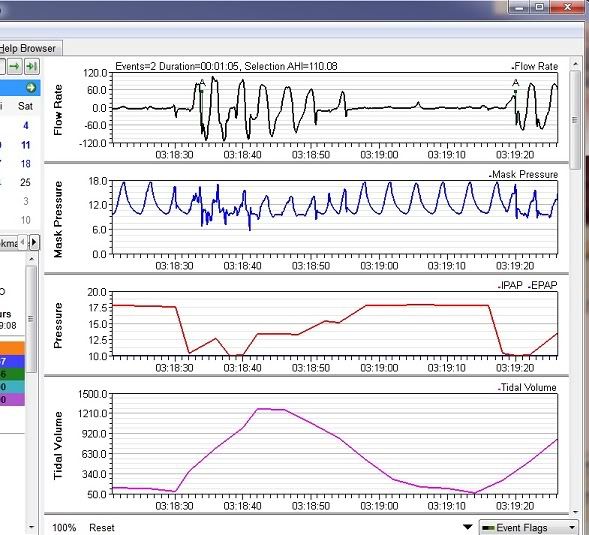Qzfgu wrote:Thanks,
I know you are prone to long Centrals, are you able to see on your data when they are being treated? Your max ipap is 25, does it ever get that high? I know each patient is very different and wil be discussing with RT later this week, just want to understand how it is intended to work first.
I have an older version of both the Resmed and Respironics units. They did not include the detailed waveform data. So, no I do not see the individual apnea events. However, I do know that my machine gets to 25cm H2O. It's one reason I struggle with mask leaks. In fact, I set a range for the EPAP on the Respironics unit, so that pressure can reach 30cm H2O - though that high is fairly rare. I have to have had obstructive apneas AND central apneas at the same time. Oddly, I don't seem to have that occur. The obstructive apneas occur more frequently during REM sleep and the centrals occur more frequently during non-REM sleep. (REM sleep relaxes our muscles, so obstructive apneas are more pronounced during that type of sleep. However, REM sleep increases the neural activity, so the problems with my brain stem are reduced during REM sleep .. thus, I have fewer central apneas during REM sleep. At least that's what I understand from when I discussed this with my neurologist.) So, the two types of apnea rarely overlap.
And yes, as you note, I stop breathing for a minute or more at a time. Yikes! (Of course, I think that's what killed my first ASV unit ... The bearings wore out, I suspect from almost two years of those apneas). Fortunately, the ASV unit makes a HUGE difference. I wake most mornings quite clear headed and without the morning headaches. My machines tell me that my AHI tends to run less than 5 almost all the time. Since I feel well, I don't monitor the data except to periodically (quarterly) check it.
Hope that helps.

